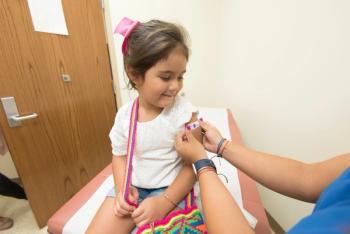
Exposure to Antibiotics Before Age 2 Associated with Greater Risk of Health Conditions
Children who were exposed to antibiotics before age 2 had a greater risk of childhood health conditions like asthma, celiac disease, obesity and ADHD, a new study in Mayo Clinic Proceedings found.
Exposure to antibiotics before age 2 is associated with development of several health conditions including asthma, celiac disease, obesity and attention deficit hyperactivity in childhood, a new study found.
The study,
“The greater the exposure, defined by the number of prescriptions, the greater the risk, and some antibiotics appear to pose more risk than others,” Nathan K. LeBrasseur, PhD, MS, professor and co-chair of research in the Department of Physical Medicine and Rehabilitation and director of the Healthy Aging and Independent Living Program, Robert and Arlene Kogod Center on Aging at Mayo Clinic, told Contagion®. “Antibiotics have a marked effect on the microbiome, and the microbiome helps orchestrate development. Thus, our data raise a number of interesting, testable questions about how antibiotics may directly influence the development of childhood health conditions, and hopefully trigger efforts to guide the appropriate use of antibiotics in children.”
The study found that children prescribed at least 1 course of antibiotics were more likely to develop asthma, allergic rhinitis, overweight, and ADHD. Girls were more likely to develop atopic dermatitis and celiac disease, and boys were more likely to develop obesity.
“Antibiotics are remarkable drugs that, when used appropriately, save lives and prevent severe consequences of bacterial infections,” LeBrasseur said. “Antibiotics are widely-viewed as safe, particularly in children, and we (parents, caregivers, etc.) may press a practitioner to provide our child an antibiotic even if there is strong evidence that their cough or ear ache is caused by a virus, not a bacterial infection. Our findings suggest we should be cautious with this approach.”
The most commonly prescribed antibiotics were penicillins, cephalosporins, and macrolides. Caphalosporins were associated with a greater risk for the most conditions, including autism and food allergies.
Children who received penicillins had an increased risk of asthma and overweight. Among girls, exposure to penicillins also was associated with an increased risk of celiac disease and ADHD and a decreased risk of autism, while boys showed an increased risk of obesity.
Children who were exposed to macrolides showed an increased risk of asthma and overweight. Among boys, exposure to macrolides also was associated with an increased risk of allergic rhinitis and obesity and a decreased risk of learning disability, while girls showed a decreased risk of atopic dermatitis.
The study also examined the timing of antibiotic exposure and infant and maternal factors such as ethnicity, birth weight, delivery by cesarean section, mothers’ exposure to antibiotics during pregnancy and maternal smoking.
“This is a complicated study that raises questions as opposed to providing definitive answers; a critical part of the scientific process,” LeBrasseur said. “It is hoped that our data can be used by healthcare professionals as part of the shared decision-making process with patients and parents/caregivers. At the minimum, our study will increase awareness. Further studies will hopefully provide clearer guidelines on which antibiotics are effective yet pose lowest risk.”
The effects of antibiotics on the microbiome and the overall health of people has gained increasing interest, driving research on antimicrobial resistant pathogens and the development of antimicrobial stewardship programs to reduce unnecessary exposure to antibiotics.
Between 2011 and 2016, antibiotic prescriptions in children fell 13%, according to a
Newsletter
Stay ahead of emerging infectious disease threats with expert insights and breaking research. Subscribe now to get updates delivered straight to your inbox.

















































































































































































































































































